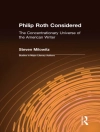The association of Nazism with the symbol of ultimate evil – the devil – can be found in the works of Klaus and Thomas Mann, Else Lasker-Schüler, and Rolf Hochhuth. He appears either as Satan of the Judeo-Christian tradition, or as Goethe’s Mephisto. The devil is not only a metaphor, but a central part of the historical analysis. Barasch-Rubinstein looks into this phenomenon and analyzes the premise that the image of the devil had a substantial impact on Germans’ acceptance of Nazi ideas. His diabolic characteristics, the pact between himself and humans, and his prominent place in German culture are part of the intriguing historical observations these four German writers embedded in their work. Whether writing before the outbreak of WWII, during the war, or after it, when the calamities of the Holocaust were already well-known, they all examine Nazism in the light of the ultimate manifestation of evil.
Emanuela Barasch Rubinstein
Mephisto in the Third Reich [PDF ebook]
Literary Representations of Evil in Nazi Germany
Mephisto in the Third Reich [PDF ebook]
Literary Representations of Evil in Nazi Germany
Beli ebook ini dan dapatkan 1 lagi GRATIS!
Format PDF ● Halaman 179 ● ISBN 9783110379433 ● Penerbit De Gruyter ● Diterbitkan 2014 ● Diunduh 3 kali ● Mata uang EUR ● ID 6295313 ● Perlindungan salinan Adobe DRM
Membutuhkan pembaca ebook yang mampu DRM












